
FS-1192 | February 2022
Control of Large Palmer Amaranth and Common Ragweed in Soybean or Corn
Given the challenges of controlling Palmer amaranth or common ragweed taller than 3 to 4 inches and preventing seed production, infested fields need special attention to ensure they receive a timely herbicide application. Controlling plants while they are small will preserve yield potential and save costs. Plants over 8 to 10 inches often need sequential herbicides to achieve complete control and prevent seed production. |
Current weed control recommendations for grain crops are to start clean, using a good burndown herbicide program or tillage, apply residual herbicides with multiple effective modes of action at planting, and then apply an effective postemergence herbicide before weeds are 3- to 4-inches tall. Many farmers have achieved acceptable weed control without adhering strictly to these recommendations because they have light weed pressure, do not have fast growing/aggressive weed species, and/or do not have herbicide-resistant weeds.
Glyphosate is very effective on many common weed species in the Mid-Atlantic region, and often controls weeds 12- to -16 inches. Glyphosate-resistant weeds, including Palmer amaranth and common ragweed, however, require intensive management and careful herbicide selection to ensure good control.
Palmer Amaranth
(Amaranthus palmeri S. Wats) has moved into the Mid-Atlantic region over the past 10 to 15 years. It is in the pigweed family, closely related to smooth and redroot pigweed, but with a few key differences related to management:
- The germination period of Palmer amaranth is much longer than other pigweed species;
- It grows much faster under summer conditions (Figure 1);
- It produces a lot more seeds per area;
- and It can cause significantly more yield loss.
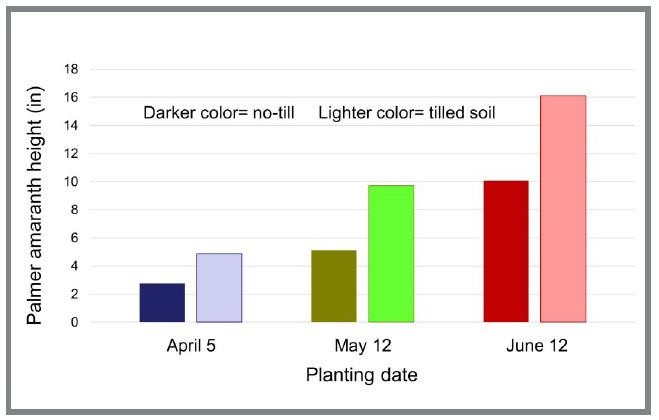
In addition to the biological differences, Palmer amaranth populations have evolved resistance to many commonly used corn and soybean herbicides, some of which have been highly effective, such as glyphosate (Group 9) and the Group 2 herbicides (Classic, Pursuit, Harmony, FirstRate, Sandea). Managing Palmer amaranth has shifted from reducing its impact on yield (reducing weed growth so there is no yield loss) to eliminating any seed production (zero tolerance to any Palmer amaranth to prevent the spread within and between fields).
Effectively controlling Palmer amaranth in soybeans often requires applying postemergence herbicides, three to four weeks after planting. At that time, the soybean canopy may still be a few weeks away from closure (leaves touching between the rows to block sunlight and stop additional seedling emergence). As a result, postemergence applications need to include an additional residual herbicide to provide control until the soybeans form a tight canopy.
Fields infested with Palmer amaranth often are not treated in a timely manner due to weather, equipment issues, timing, or desire to reduce the number of applications. As a result, many Palmer amaranth plants are more than 4-inches tall when herbicides are applied. In order to provide advice and suggestions for situations with large plants, University of Delaware and Virginia Tech conducted similar studies of Palmer amaranth control with funding from both the Delaware and Virginia Soybean Boards.
Common treatments applied to tall Palmer amaranth plants (over 16 inches) in soybeans were:
- dicamba (XtendiMax or Engenia) plus glyphosate;
- 2,4-D choline (Enlist One) plus glyphosate;
- glufosinate (Liberty) alone;
- glufosinate plus Enlist One;
- glufosinate plus glyphosate;
- fomesafen plus glyphosate (Flexstar GT).
Comparisons across 10 trials revealed:
- Weeds do not germinate at the same time and growth rates can vary, so treatments typically killed smaller, later-emerging plants, reducing overall density of Palmer amaranth, but did not kill larger, earlier-emerging plants.
- Most treatments caused a lot of damage to large Palmer amaranth plants, even killing some of them, and reduced their competitiveness, often over 70% control.
- control was slightly higher and more consistent with dicamba or 2,4-D based programs compared to glufosinate plus glyphosate;
- including fomesafen (Reflex or Flexstar GT) or lactofen (Cobra) did not improve control.
- Treatments reduced seed production (Figure 2)
- but, treatments did not eliminate seed production of the surviving plants;
- so, the combine could spread seeds present at harvest within and between fields;
- and these seeds may contain resistant mutations which confer herbicide resistance due to selection pressure.
Summary of sequential applications.
- Two (sequential) applications of dicamba or 2,4-D, applied at 7- to 10-day intervals, provided at least 99% control of large Palmer amaranth.
- Sequential applications of Liberty were very good, but not as consistent as sequential applications of dicamba or 2,4-D;
- applying dicamba or 2,4-D followed by glufosinate (7 to 10 days apart) was highly effective and may be necessary due to the June 30th cut-off date for dicamba;
- glufosinate followed by dicamba or 2,4-D was not as effective.
- Sequential applications were needed to eliminate seed production.

Common Ragweed
Common ragweed (Ambrosia artemisiifolia L.) is a summer annual weed, native to North America. Common ragweed is a problem for farmers because:
- it emerges early in the spring, and those early emerging common ragweed plants may be too large to control with many soybean burndown programs;
- it has a relatively large seed so it emerges from greater depths compared to Palmer amaranth;
- most soil-applied herbicides for soybeans do not provide a high level of control; however, tank-mixtures of metribuzin, Lorox, Command, Reflex, or Valor provide fair to good control;
- common ragweed tolerates cool weather quite well, which allows it to compete very well with early-planted crops.
Common ragweed populations in the region have developed resistance to Group 9 (glyphosate), Group 2 (FirstRate and Classic), and Group 14 (Reflex and Cobra) herbicides. Separate trials at the University of Maryland (UMD), funded by the Maryland Soybean Board, and Virginia Tech (VT) examined control of common ragweed.
- The VT trial resulted in over 90% control of plants up to 12-inches tall with Liberty, dicamba, or 2,4-D and these treatments dramatically reduced seed production (less than five seeds per plant).
- In MD, control of common ragweed plants (averaging 9 inches) with Liberty alone was 75%, and 93 to 100% for treatments with only Enlist One or Enlist One tank mixed with glyphosate or Liberty;
- control of 16-inch tall common ragweed plants was about 50% for Enlist One alone, and 74 to 88% when Enlist One was tank mixed with Liberty or glyphosate;
- Enlist One followed by a second application of Enlist One resulted in complete common ragweed control (Figure 3).

Soybean Board project in 2020 and 2021.
Common ragweed has a relatively short emergence period. Most of the emergence occurs by early summer; as a
result, there is less need for postemergence herbicide applications to contain a residual herbicide.
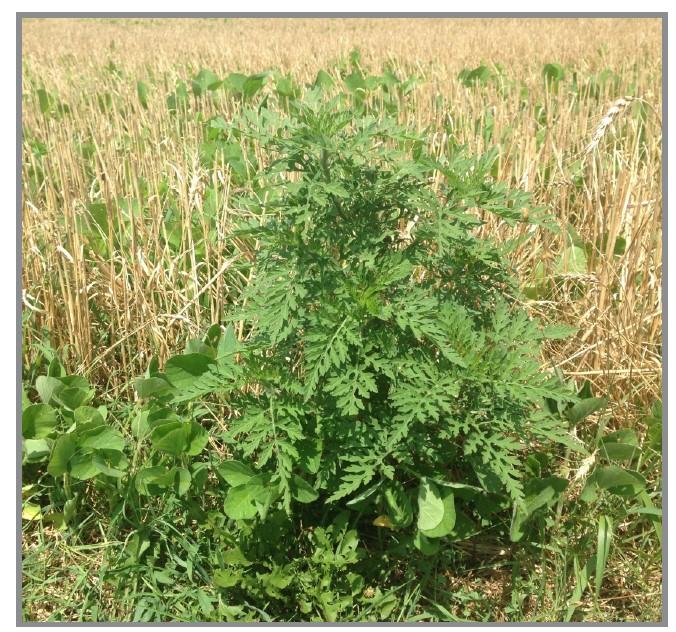
| CONSIDERATIONS | LIBERTY | ENLIST ONEᵃ |
ENLIST DUOᵃ |
XTENDIMAXᵃ | ENGENIAᵃ |
|---|---|---|---|---|---|
| Cutoff date | No | No | No | June 30 | June 30 |
| Crop stage cutoff | R1 | through R1 | through R1 | through R1 | nsᵇ |
| Pre-harvest interval | 70 days | 30 days | 30 days | 7 days | ns |
| Interval between applications | 10 days | 12 days | 12 days | 7 days | 7 days |
| Droplet size | medium to coarse | VCᵇ and XC | XC and UC | XC and UC | XC and UC |
| Technology trait |
Liberty Link Enlist E3 XtendFlex |
Enlist E3 |
Enlist E3 |
Xtend XtendFlex |
Xtend XtendFlex |
|
ᵇAbbreviations: VC, very coarse; XC, extra coarse; UC, ultra-coarse; ns, not specified |
|||||
“Full labeled rates” were used in all the soybean trials. Since weeds were large, it was not a lethal dose, thus increasing the likelihood of selecting herbicide resistant biotypes (Figure 4). Repeated exposure of a weed community to sub-lethal herbicide rates can select for resistance. Herbicide applications for resistance management need to include at least two effective modes of action, applied at the right time, and the correct rate. Using full rates to control large weeds does not fit these criteria.
Postemergence Control of Palmer Amaranth or Common Ragweed in Corn and Sorghum Requires Proper Pesticide Application
Palmer amaranth is easier to manage in corn than soybeans and one of the main reasons is corn is planted earlier in the season (cooler weather) when Palmer amaranth growth is slower (see Figure 1).
Postemergence control with mesotrione (Callisto or Halex GT) plus atrazine is very effective for both Palmer amaranth and common ragweed (although mesotrione alone is not nearly as effective). All atrazine applications need to be applied before corn is 12 inches tall. Likewise, dicamba is effective for control in corn (Status or
DiFlexx, can be used on corn up to 36 inches). When using dicamba for Palmer amaranth or common ragweed, use the higher portion of the rate range [Status at 10 fl oz (0.34 lb ae dicamba plus 0.1 lb diflufenzopyr) and DiFlexx at 16 fl oz (0.5 lb ae dicamba)].
Huskie plus atrazine can be used to treat sorghum up to 12 inches tall. There is no height restriction for applications of Huskie alone but it is much more effective if atrazine is included in the tank mix. Clarity is another option for sorghum, but maximum height for Clarity is 15 inches (max rate is 8 fl oz [0.25 lb ae dicamba]).
Stop Seed Production to Control Weeds
Species prone to developing resistance such as Palmer amaranth and common ragweed, need special attention to limit their spread and avoid the potential of selecting for additional resistance. Zero seed production is the best method. A single herbicide application to large plants likely results in many plants surviving and producing seeds (Figure 5). It is best to plan and treat fields with Palmer amaranth with a soil-applied herbicide and spray a postemergence herbicide before seedlings reach 3 to 4 inches in height (four weeks after planting) and include a residual herbicide to control later flushes. Remove any plants that escape control before seedheads appear.
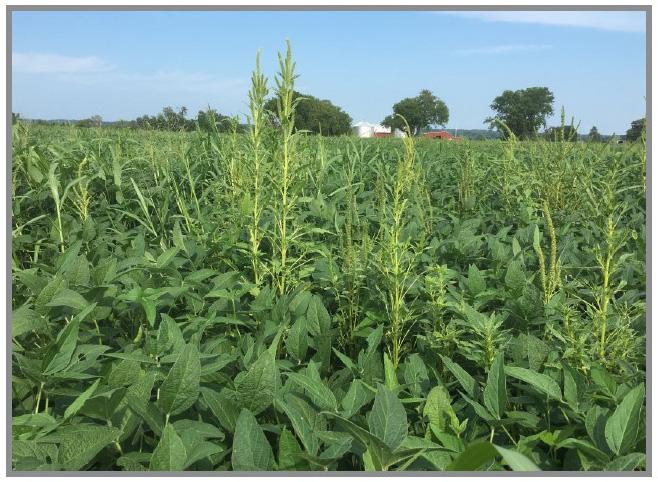
Incorporate non-chemical approaches as well such as crop rotation, late-terminated cover crops, narrow row spacing, tillage, or hand removal. Visit GrowIWM.org for more in-depth information. Other considerations when spraying large weeds:
- good spray coverage will be difficult (Figures 5 and 6); select higher spray volume (> 15 GPA) and appropriate spray tips to maximize coverage (Table 1);
- yield loss may result from sprayer wheel tracks; larger crop plants are less likely to recover from sprayer traffic damage;
- even if large Palmer amaranth or common ragweed plants are severely injured, weed competition before the 6th trifoliate soybean stage or 5th collar in corn often results in yield loss;
- timely applications will reduce overall costs as well as prevent yield loss (Table 2).
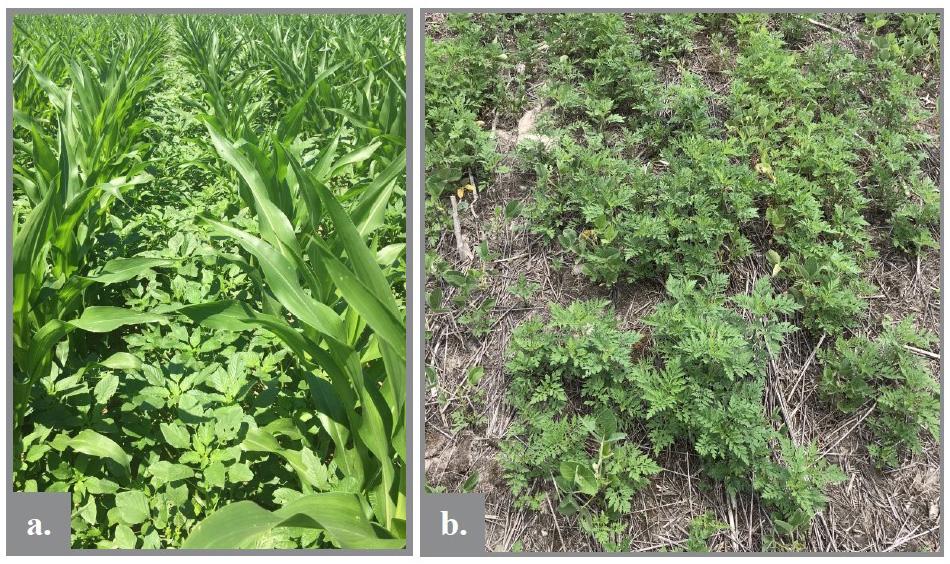
| Option for 4-inch tall Palmer amaranth | Costs $ | Option for Palmer amaranth over 8 inches tall | Costs $ | Most effective option for Palmer amaranth over 8 inches tall | Costs $ | |
|---|---|---|---|---|---|---|
| PREᵃ | Valor EZ (2.5 oz) | 10.15 | Valor EZ (2.5 oz) | 10.15 | Valor EZ (2.5 oz) | 10.15 |
| PREᵃ | metribuzin (4 oz) | 5.00 | metribuzin (4 oz) | 5.00 | metribuzin (4 oz) | 5.00 |
| POST1ᵇ | Liberty (1 qt) | 17.50 | n/a | n/a | ||
| POST1ᵇ | Reflexᶜ (1.5 pt) | 10.60 | n/a | n/a | ||
| POST2ᵇ | n/a | Liberty (1 qt) | 17.50 | Enlist One (1 qt) | 16.00 | |
| POST2ᵇ | n/a | Enlist One (1 qt) | 16.00 | n/a | ||
| POST3ᵇ | n/a | n/a | Enlist One (1 qt) | 16.00 | ||
| Applications ($10.25) | two | 20.50 | two | 20.50 | three | 30.75 |
| Total costs | $63.75 | $69.15 | $77.90 | |||
|
ᵇNote: POST1= weeds less than 4 inches tall; POST2= larger weeds, often over 8 inches tall; POST3= application 7 to 12 days after POST2. ᶜReflex is often used for postemergence Palmer amaranth control because it provides both postemergence and residual control. |
||||||




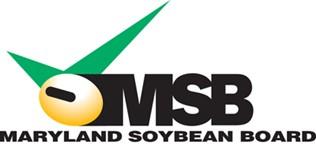
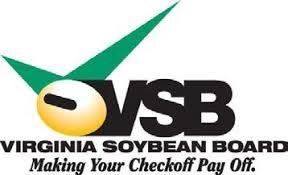
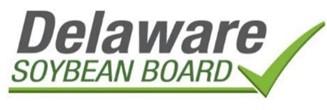
| KURT VOLLMER kvollmer@umd.edu MICHAEL FLESSNER Virginia Tech DWIGHT LIGENFELTER Penn State University VIJAY SINGH Virginia Tech MARK VANGESSELL University of Delaware JOHN WALLACE Penn State University This publication, Control of Large Palmer Amaranth and Common Ragweed in Soybean or Corn (FS-1192) is a part of a collection produced by the University of Maryland Extension within the College of Agriculture and Natural Resources. The information presented has met UME peer-review standards, including internal and external technical review. For help accessing this or any UME publication contact: itaccessibility@umd.edu For more information on this and other topics, visit the University of Maryland Extension website at extension.umd.edu University programs, activities, and facilities are available to all without regard to race, color, sex, gender identity or expression, sexual orientation, marital status, age, national origin, political affiliation, physical or mental disability, religion, protected veteran status, genetic information, personal appearance, or any other legally protected class. |